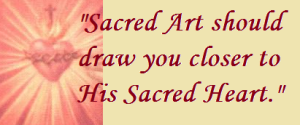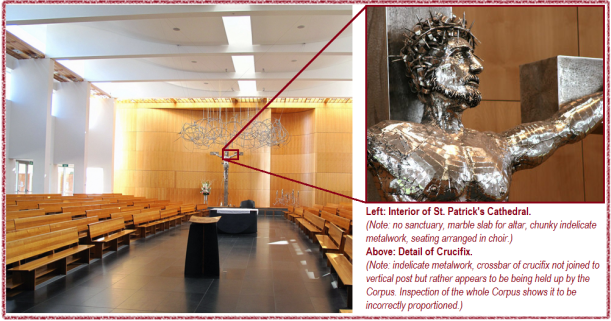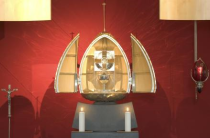Beauty – that transcendental, objective reality – should raise the mind to the Author of beauty. We should find His vestige in all things beautiful, and we should offer it back to Him in thanksgiving.
This imprint of the Creator in all things beautiful – this is a form of self-gift. This is just another way in which God gives Himself to us. When we allow ourselves to be moved – when we allow our minds and our attention to be elevated and directed to Him – THIS is the manner in which we give ourselves back to Him. This mutual self-gift, rather like a marriage, gives birth. The fruit born of this marriage is thanksgiving, and the act of thanksgiving shapes our capacity to further behold beauty – thus the cycle of giving starts again. What is the telos of beauty? It is this – the wedding of humanity to God through the contemplation of His gratuitous love for us. We could call it communion – the answer to the prayer of Jesus during the Last Supper discourse in John’s Gospel where He prayed that all might be one in Him. The telos of beauty is indeed beautiful in its own right!

Art was once the bastion of beauty, the stronghold of the sublime. Now, the castle has been stormed and the vestige of the Creator that exists in the work of our hands has become obscured and difficult to distinguish.
All this at the hands of a defeatist phenomenon existing in the world today known as the cult of ugliness – a movement in active pursuit of the subversion of beauty.
Defeatist seems an odd descriptor, you say?
I stand by it. I propose that the cult of ugliness is a defeatist movement because I believe that it is born of a sense of inadequacy surrounding one’s ability to truly uplift, to contribute to the further generation of beautiful works and artefacts. In such a mindset, the only way to make a name for oneself in the world of art is to move the goal posts, to set a different benchmark of greatness. To be successful in art whilst working within the transcendental reality of beauty, one is required to be truly excellent, truly unique. One must have more than just a sense of the aesthetic, more than a yearning for self-expression. One must actually have elite artistic ability with one’s chosen medium and one must be able to unite this talent with both desire and capacity for expression. Taking it a step further, this unity of talent and articulation must be wedded to some participation in the otherworldly for the resultant artwork to truly move its beholder, to truly uplift an audience.
Our natural human desire to create is itself a vestige of our Creator. We know that unlike Him, we cannot create ex nihilo and so it is perhaps more appropriate rather to suggest that in art, we innovate. Whether our art is music composition or performance, whether it is sculpture or painting or calligraphy or architecture or any other form – we draw together in a unique combination of things that already exist – that which we have already seen, that which we know; then we add a little of ourselves to present in turn something different, something new. We work with established techniques and paradigms and we add our experience and worldview.
In the cult of ugliness, the ‘artist’ is defeated by this task before he begins. He is intimidated by the beauty he has perceived and his own inadequacy as an artist alongside another’s greatness. His response is to innovate through shock and he knows that to shock he must maim. He torments beauty, he teases it and turns it on its head. He produces something that runs away from beauty in much the same way as an angst-affected adolescent runs away from parental constraint, moving out of home before he is truly ready. Thus ’emancipated’ he spirals downward as he experiments with forms and subjects that are not objectively good. Perhaps short-term satisfaction is achieved, but ultimately good is not served because the sense of final direction, of purpose, is lost in a sea of endless possibilities. Such an artist thinks himself free; rather, he is imprisoned by the self-lie of his inadequacy.
This very cult of ugliness has infiltrated the realms of Sacred music, Sacred art and Church architecture. It can’t be questioned – one glance at Parramatta’s award-winning Cathedral “restoration” will confirm my claim. The case can be strengthened by one visit to the average youth Mass where one hears music in which the compositional priority is to comply with the constraints of a certain sub-culture; it almost seems that glorifying the Lord with the music is just an incidental thing.
This cult of ugliness has penetrated our defences – but the most devastating result of this is NOT the absence of beauty that COULD and SHOULD be present. That alone is a loss to the community, but the real travesty is the DIVISION that this has caused.
 I still attend Mass at the Parramatta Cathedral, because Our Lord resides there in the Tabernacle, even if the Tabernacle DOES look like Calel’s escape shuttle from Superman IV. I still attend Masses with sub-standard music when something more preferable isn’t available and I will sing along with a wholehearted intent to praise the Lord. I would rather sing the Ave Verum than One Bread, One Body but I will sing the latter when that is being sung because even when it DOESN’T feel like it, the reality of the Mass is that it is a participation in the Heavenly Wedding Banquet.
I still attend Mass at the Parramatta Cathedral, because Our Lord resides there in the Tabernacle, even if the Tabernacle DOES look like Calel’s escape shuttle from Superman IV. I still attend Masses with sub-standard music when something more preferable isn’t available and I will sing along with a wholehearted intent to praise the Lord. I would rather sing the Ave Verum than One Bread, One Body but I will sing the latter when that is being sung because even when it DOESN’T feel like it, the reality of the Mass is that it is a participation in the Heavenly Wedding Banquet.
A few thoughts, then, on how we can assess whether art is suited to a Sacred purpose:
Sacred art should make the heart skip a beat for the original Artistan.
Sacred art should draw us closer to the Sacred Heart.
Sacred art should NOT be divisive.
Sacred art should NOT massacre the notion of beauty.
Our response to Sacred art, and our cultivation of it, should be ordered toward an authentic Communion with God AND His Church – a participation in the Divine Marriage to which we are all called.
Only thus will the telos of beauty be realised.
